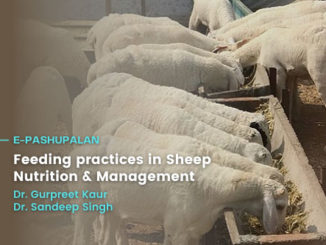Abstract
Mycotoxins are toxic secondary metabolities produced by fungai. There are numerous mycotoxins in the food chain that cause unwanted biological effects inside human and animal organisms upon ingestion. High level of mycotoxins in food and feed results in the appearance of acute mycotoxicoses and high mortality rate. Lower levels cause the occurrence of chronic mycotoxicoses with or without manifested clinical symptoms, but followed by a considerable decrease in production performance, immunosuppressive effects, and the occurrence of residues in poultry meat and eggs. The presence of mycotoxins results in significant health disorders and a decrease in production performances. This leads to considerable economic loss for the poultry industry either death of the poultry or the decrease in body mass, number and quality of eggs, greater food conversion, and immunosuppression. Immunosuppression results in increased sensitivity to infective agents and a bad vaccine response. Morevover, mycotoxin residues in poultry meat, eggs and products derived from them pose a threat to human health.
Introduction
In poultry sector feed storage is a challenging task for both feed manufacturer and producer because of slight fluctuation in temperature or relative humidity automatically affect the feed quality by means of mold growth. Toxin produced by mold called mycotoxin and its consider as a secondary metabolite of mold growth. Consuming more amount of mycotoxin in feed leads to develop diseases is called mycotoxicosis. The most common poultry feed ingredients contaminated by mycotoxins include: corn and corn by-products, wheat and wheat by-products, soybean meal and barley.
In India, the economy of poultry industry is heavily affected due to wide mycotoxin exposure or contamination of various agricultural commodities. The economic losses associated with mycotoxicoses include decreased growth rate, reduced egg production, reduced feed conversion, increased morbidity and mortality, carcass condemnation, poor egg shell quality, reduced fertility, leg problems and increased susceptibility to other diseases caused due to their immunosuppressive effects among the affected birds. Out of more than 500 mycotoxins identified in nature, Aflatoxins (AF), Ochratoxins (OT), Citrinins (CIT), Fumonisins (F), and Tricothecenes are the most important mycotoxins posing threat to poultry industry. The poisoning in humans and animals caused by feeds and foods contaminated with mycotoxins may range from a slight reaction to death.
Aflatoxins
Aflatoxins are a group of closely related toxic substances produced by some fungi, especially Aspergillus flavus, Aspergillus parasiticus and Aspergillus nomius. Aflatoxins reduces the ability of the bird to digest protein and absorb amino acids. It reduce the ability to synthesize DNA, RNA and ribosome protein and thus hepatic amino acids retention increases. As a result aflatoxins reduce the protein synthesis and increase the protein requirement of the bird. Therefore, the birds with low protein suffer more in terms of body weight gain, immunity and egg production than those fed with high level of protein in diet.
Aflatoxins are known to have a hepatotoxic effect in poultry and also a hepatocarcinogenic effect in exposed animals. The most common pathological lesions associated with aflatoxicosis in poultry are found in the liver, lymphoid organs, and testes, often occurring over a period of chronic exposure. In acute – subacute aflatoxicosis, the liver appears enlarged, pale yellow in color, friable, and usually the gall bladder is also enlarged and filled with bile.
Ochratoxin
Ochratoxins are produced by several species of Aspergillus (Aspergillus ochraceous) and Penicillium. (Penicillium viridicatum). There are 7 types of ochratoxins of which ochratoxin A (OTA) is the most toxic. Ochratoxin A is chemically defined as 7- carboxyl-5-chloro-8-hydroxyl 3, 4-dihydro-3-R-methyl isocoumarin linked to L-β-phenylalanine.
The main effect produced by ochratoxin is nephrotoxicity but can also produce a liver disorder which produces an accumulation of glycogen in hepatic and muscular tissue. The signs are dehydration, emaciation, dry gizzard, bleeding in mucosa of proventriculus and catarrhal enteritis in young chicks.
Ochratoxin toxicity reduced feed intake reduced growth rate and egg production, reduced feed conversion efficiency, mortality due to acute renal failure, poor egg shell quality and higher incidence of eggs with blood spots, reduced embryo viability and decreased hatchability, reduced feathering, polyurea with large volumes of wet faeces.
Citrinin
Citrinin is produced by several species of genus Penicillium and Aspergillus but it is chiefly produced by Penicillium citrinum, Penicillium expansum and Penicillium verrucosum. Citrinin toxicity symptoms include reduced growth, decreased feed consumption and feed conversion. It is a nephrotoxin and like ochratoxin. It causes necrosis of tubual epithelial cells in the kidney. Necropsy of birds with citrinin toxicity revealed the presence of pale and swollen kidneys. Increase in the amount of water consumption followed by diarrhea. Generally, the incidence of citrinin toxicity is low. No adverse effects on the performance were reported when feed containing 100 ppm citrinin was fed to broiler chickens.
Fumonisin
Fumonisins are predominantly produced by Fusarium moniliforme. There are 6 types of Fumonisins viz. B1, B2, B3, B4, A1 and A2. However, Fumonisins B1 (FB1) and Fumonisins B2 (FB2) are the most prominent and potent toxic. These mycotoxins inhibit the synthesis of lipoproteins sphingolipids (sphinganine and sphingosine), structural component of nervous system.
Fumonisins toxicity causes paralysis, extended legs and neck, wobbly gait, gasping, reduced growth, increased organ weights, hepatocellular hyperplasia, poor vaccination response and increased liver sphinganine
Trichothecenes
The trichothecenes (TCT) are mainly produced by Fusarium graminearum, F. episphaeria, F. lateritium, F. nivale, F.oxysporum, F. poae F. rigidiusculum, F. roseum, F. solani, F. sporotrichoides, and Fusarium tricinctum. TCT are also produced by Calonectria nivalis, Cephalosporium crotocigenum, Gibrellasaubinetti, Mycotecium verrucaria, Stachybotrys atra, Trichoderma viride and Tricotecium roseum. Toxin production is greatest at high humidity and at temperatures of 6 to 24ºC.
Toxic effects of trichothecenes include oral lesions, growth retardation, abnormal feathering, decreased egg production and egg shell quality, regression of the bursa of Fabricius, peroxidative changes in liver, abnormal blood coagulation, leucopoenia and proteinemia, and immunosuppression.
Factors affecting development of fungi and mycotoxin production
1. Physical factors
Humidity, temperature, microflora zones and physical integrity of the grains
2. Chemical factors
PH, Composition of the substrate and mineral nutrients.
3. Biological factors
Presence of insects and specific strains
Mode of Transmission
Ingestion of fungal spore through air
Mycotoxin producing fungi divided into 2 groups.
- Field fungi (Fusariumsp) produced in field itself
- Storage fungi (Aspergillus and Penicilliumsp) Produced toxin during storage condition
Toxic effect of mycotoxin in Poultry
It has be classified into two types
- Reversible- cause minor damage and that can heal automatically
- Irreversible- cause permanent damage to health like Carcinogenicity, Genotoxicity, Nephrotoxicity, Hepatotoxicity and Estrogenicity
Post mortem findings in poultry
- Mycotoxin can cause damage to mucosae with which they come in contact.
- They can also be absorbed and affect blood coagulation, resulting in petechial and larger hemorrhages in various tissues.
- Liver and kidney lesions – livers may be enlarged and fatty or show bile retention or tumors. Enteritis of variable degree may be seen.
- Hydro pericardium.
- Pale bone marrow.
- Regression of the bursa of Fabricius.
- Gizzard erosions.
Diagnosis
- History
- Symptoms
- External lesion
- By analyzing the mycotoxin level in feed sample- 2 type of testing
-
- Rapid test by means of lateralflow test, ELISA, flurometry.
- Reference testing by means of thin layer chromatography, Gas chromatography, HPLC, liquid chromatography/mass spectrometry.
Prevention
- Proper ventilation should be there in poultry house to avoid mold growth
- Proper drying of feed which contain more moisture
- Addition of antifungal agent like organic acid-propionic acid in the level of 0.5-1.5 g/kg feed.
Steps involved in reduction of adverse effects
Pre harvest field and post-harvest storage leads to increase mycotoxin concentration. If the concentration is high it can be reduced by means of blending dilution and sorting by species tolerance and in low concentration of mycotocin both of them leads to actual exposure to animal(health and performance) and potential for contamination of meat, milk and egg.
Detoxification done by pre feeding techniques are physical, chemical and biological methods or else controlled during digestion in the addition of additives like absorbents, probiotics, enzyme in the feed
Physical methods
Decontamination of ingredients by
- Dilute with sound grain
- Washing- dehulling- polishing
- Separation by manually
- Heat treatment like roasting, autoclave
- Density segregation- floatation
- Electronic color sorting
- Solvent extraction
- Ultra violet radiation
Chemical methods
- Ozone
- Ammonia, ammonia hydroxide
- Sodium bisulfide
- Peroxide acids
- Formaldehyde
- Addition of propionic acid 0.5-1.5g/kg
- Calcium hydroxide
- Smectite-toxic binder
- Activated charcoal
Biological methods
- Fortified diet addition vitamins, methionine, Selenium, Fat enriched diet.
- Esterified glucomannan derived from the cell wall of yeast Saccharomyces cerevisiae leads to protect against Aflatoxin B1 and Ochratoxin
- Algae, plant extracts, microbial feed additives-probiotics binds with mycotocin leads to degrade it.
Treatment
- Remove toxic feed and replace with unadulterated feed
- Treat concurrent disease to alleviate disease interactions
- Correct substandard management practices
- Provide supportive care with vitamins, trace minerals, and increased dietary protein
For treatment of mycotoxicosis, the toxic feed should be removed and replaced with unadulterated feed. Concurrent diseases should be treated to alleviate disease interactions, and substandard management practices must be corrected. Some mycotoxins increase requirements for vitamins, trace minerals (especially selenium), protein, and lipids and can be compensated for by feed supplementation and water-based treatment. Nonspecific toxicologic therapies using activated charcoal (digestive tract adsorption) in the feed have a sparing effect but are not practical for larger production units.






1 Trackback / Pingback